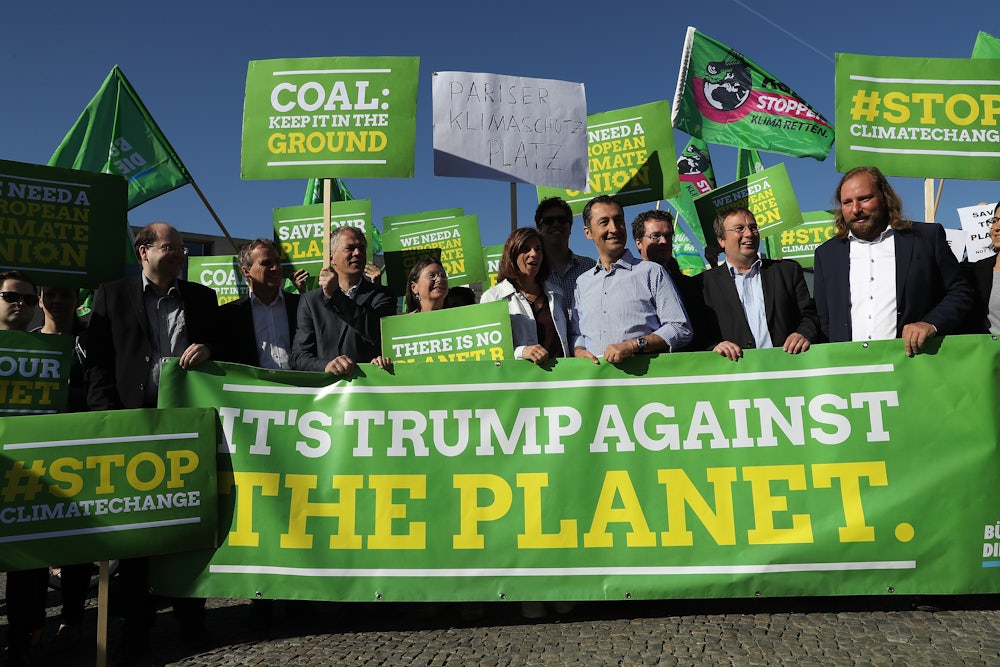The Washington Post is reporting that an environmental impact statement issued by the Trump administration projects that human activity will cause global temperatures will rise by 7 degrees Fahrenheit (or 4 degrees Celsius) at the end of the century. It also argues that this justifies relaxing fuel efficiency standards, since doing so would only augment environmental catastrophe slightly.
As the newspaper notes, the projected rise in temperature “would be catastrophic, according to scientists. Many coral reefs would dissolve in increasingly acidic oceans. Parts of Manhattan and Miami would be underwater without costly coastal defenses. Extreme heat waves would routinely smother large parts of the globe.”
Turning environmental logic on its head, the report concludes that this impending catastrophe is an argument for allowing more carbon emissions into the atmosphere “But the administration did not offer this dire forecast as part of an argument to combat climate change,” the Post notes. “Just the opposite: The analysis assumes the planet’s fate is already sealed.”
The report was issued by the National Highway Traffic Safety Administration. Although it argues the proposed deregulation would have a minor overall impact on a global scale, what it calls for would be a massive erosion of efforts on the part of the United States to curb carbon emissions.
The inventory of changes listed by The Washington Post makes for startling reading:
If enacted, the administration’s proposals would give new life to aging coal plants; allow oil and gas operations to release more methane into the atmosphere; and prevent new curbs on greenhouse gases used in refrigerators and air-conditioning units. The vehicle rule alone would put 8 billion additional tons of carbon dioxide in the atmosphere this century, more than a year’s worth of total U.S. emissions, according to the government’s own analysis.
